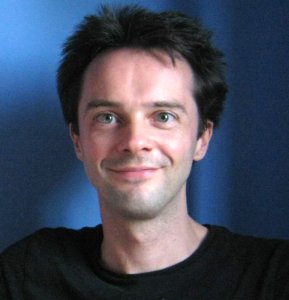As part of our series of research articles focusing on the rigour and intricacies of mathematics and its problems, Oxford Mathematician James Sparks discusses his latest work.
"Two great successes of 20th century theoretical physics are Quantum Field Theory and General Relativity.
Quantum Field Theory (QFT) is a framework for applying the principles of quantum mechanics to the classical theory of fields (such as the electromagnetic field). In QFT elementary particles, such as electrons, quarks, and photons, are quantum excitations of fields. Particle accelerators, such as the Large Hadron Collider at CERN, have tested the theoretical predictions of QFT to extraordinary precision.
General Relativity (GR) is Einstein's theory of gravity. In GR gravity is described by the bending/curving of space and time, and this geometry of spacetime is dynamical. Again, the predictions of GR have been tested in detail by many experiments, most recently in 2016 with the direct observation of gravitational waves (predicted by Einstein almost exactly a century earlier).
Despite these successes, our understanding of both theories is incomplete.
QFT is best understood in perturbation theory. Here one assumes there is a small parameter, called the coupling constant g. For g=0 the particles/fields do not interact at all. The results of particle interactions, such as collisions in a particle accelerator, may then be computed to any desired order of accuracy as a series expansion in g. However, what about phenomena in which there is no small parameter g in which to make such an expansion? In general there is very little theoretical understanding of QFT at so-called strong coupling: there are both conceptual and technical problems.
On the other hand, applying quantum mechanics to gravity has proved very difficult. Such a quantum theory of gravity is expected to be relevant for understanding black holes and the Big Bang singularity.
20 years ago Maldacena proposed a remarkable relation between these two problems. It goes under the general name of the AdS/CFT correspondence, or gauge/gravity duality. This is a conjecture asserting that certain QFTs have a completely equivalent description as a quantum theory of gravity! In particular, AdS/CFT typically relates strongly coupled QFTs (in the limit that some g tends to infinity) to classical GR. Even more bizarre is that the theories live in different numbers of dimensions: for a QFT in 4 spacetime dimensions (3 space and 1 time), the dual theory of gravity lives in 5 spacetime dimensions. In fact, in a precise sense, the QFT may be regarded as living on the boundary of the region in which gravity propagates.
After 20 years of intensive research we still don't understand AdS/CFT very well. However, what is clear from all this research is that it must be true!
As a mathematical physicist my work on this topic is at the more formal mathematical end. A key additional ingredient is supersymmetry. Whether this is actually a symmetry of Nature (above some energy scale) or not is somewhat irrelevant for my purposes: it is there to provide additional analytic control on the problem. Over the last few years new techniques have been developed in supersymmetric QFTs, that allow certain observables of the theory to be computed exactly i.e. exactly as a function of g, rather than in a series expansion. These go under the general name of localization techniques.
Broadly speaking my recent research on this has focused on two problems, which are related to each other by AdS/CFT.
The first problem involves studying supersymmetric QFT on certain curved spacetime backgrounds. Although the spacetime is curved, gravity is not dynamical in these models. Localization techniques allow for exact computations of QFT observables in many cases. Typically the infinite-dimensional path integral that defines the QFT observable reduces exactly to a finite-dimensional integral. The latter is often quite complicated e.g. involving an integral over the space of solutions to certain differential equations. Simple observables of interest are the partition function and certain supersymmetric Wilson loops. I have particularly focused on strong coupling limits of these computations, which are expected to be dual to semi-classical gravity via the AdS/CFT correspondence.
The second problem concerns the dual description of the first problem. Here one wishes to study certain classes of solutions to GR (or rather its supersymmetric cousins, called supergravity theories). Mathematically this is a filling problem, where one solves equations with fixed boundary data. My recent work on this has included the construction of new classes of solutions to supergravity, relevant for describing strongly coupled QFT observables. I am particularly interested in deriving general results. For example, provided the filling satisfies certain topological assumptions, one can often show that supersymmetric observables of interest may be computed without knowing the supergravity solution in detail. This has led to a number of general "exact results" in AdS/CFT, in which both sides of the correspondence can be computed independently, in a broad setting, and shown to always agree."
For more on James's research into the field see below.
https://arxiv.org/abs/1612.06761
https://arxiv.org/abs/1507.05817
https://arxiv.org/abs/1410.0899
https://arxiv.org/abs/1404.0268


